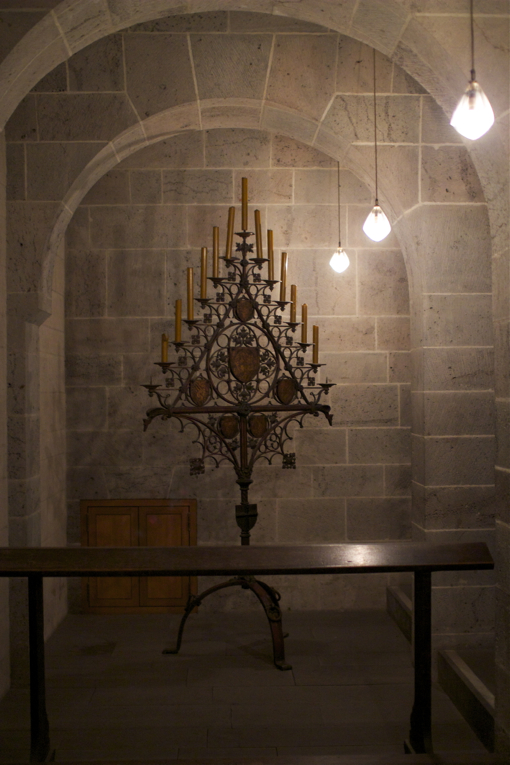The Cologne Cathedral (Kölner Dom) has been this city's most famous landmark for centuries with a current average of 20,000 people visiting every day (the train station is conveniently located just next door.) It was the tallest structure in the world from 1880 until 1884, when the Washington Monument took the title, however, the Kölner Dom still boasts the largest facade. The building is so massive that I wasn't able to capture any one side of its exterior with my lens. Above is an image of the cathedral, still standing, after suffering several hits during World War II (it may have survived with limited damage because of its function as a recognizable navigational landmark to allied aircrafts.)
The cathedral's main treasure is the golden sarcophagus of the Three Magi (of Christmas story fame), made in 12th century Belgium. It's the largest known reliquary in the Western world and is said to hold the 3 crowned skulls of the wise men. The relics of the Magi are among other highlights including: The Gero Cross, the Madonna of Milan, the altar of the patron saints of Cologne, the miracle-working Jewelled Madonna shrine, the Treasury, and extensive medieval stained glass windows. These numerous draws have put Cologne on the pilgrimage map.
The archbishop of Cologne was given the relics of the Three Magi in 1164 by the Holy Roman Emperor, Frederick Barbarossa. He had taken them from the Basilica of Sant'Eustorgio in Milan, Italy at a conquest that same year. Church officials agreed that these relics, of great religious significance, needed to be properly housed. This gift inspired the construction of the present cathedral in the Gothic style, based on the French cathedral of Amiens. In 1248 the foundation was laid. With several interruptions and a major stand still between 1473 and 1842, the cathedral took 632 years to complete. It was the romantic enthusiasm for the Middle Ages during the 19th century that pushed this masterpiece to completion, staying true to the original medieval plans (with the exception of the modern steel roof.)
Standing inside and next to such a building really is remarkable; the history resonates. It was surprising to see, amongst the figurative medieval paintings, sculpture, relics and encaustic tiles, the new stained glass window in the south transept by contemporary artist Gerhard Richter. Installed in 2007, it is 113 square meters of tiny coloured squares resembling pixels and randomly organized by a comptuer. I can't understand why the Archbishop, Joachim Cardinal Meisner, did not attend the unveiling? (He was at the conclave however, and afterwards commented "I would have presented someone different" on the choice of Cardinal Bergoglio as Pope...If you're keeping track.)




















No comments:
Post a Comment